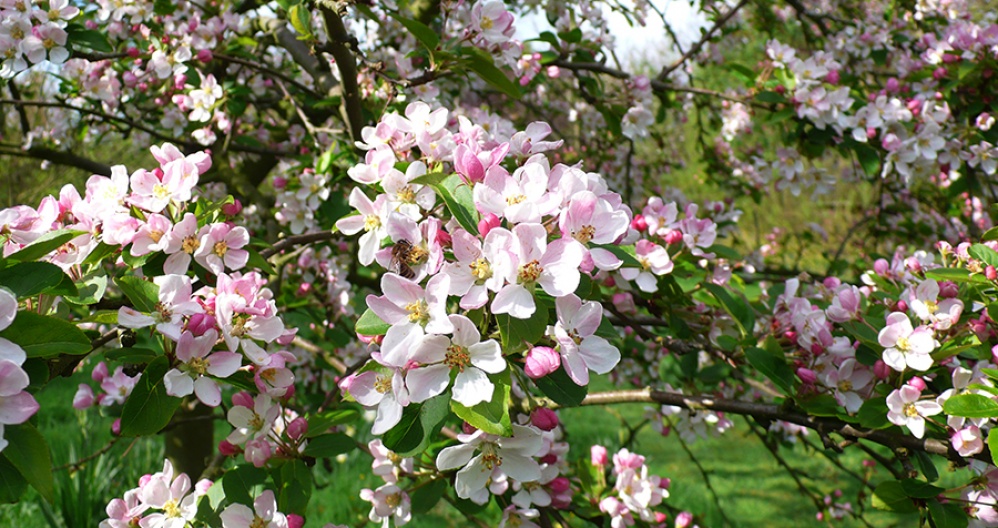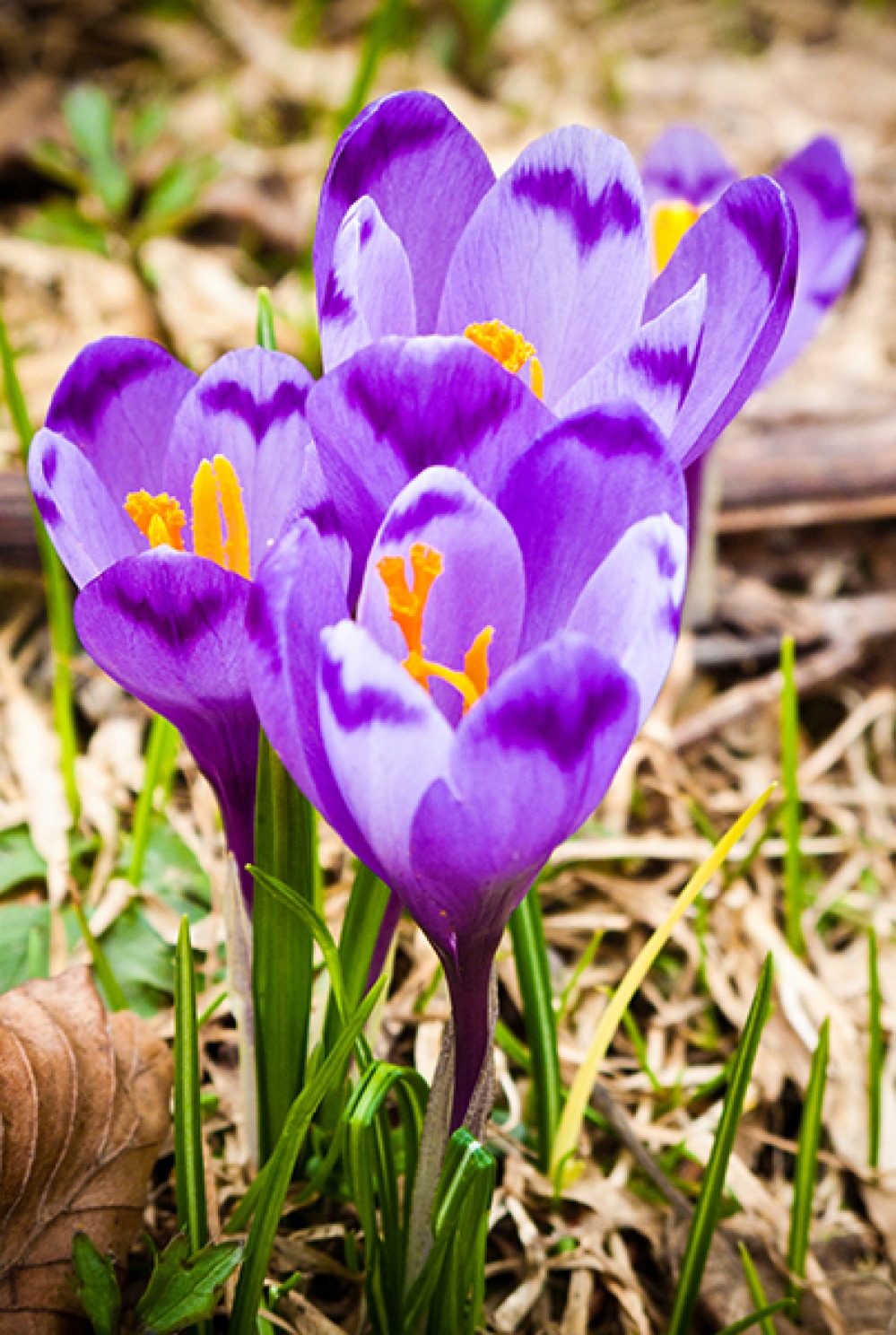Step into Spring

Vanessa Cook's Stillingfleet Lodge Gardens and Nurseries near York attract visitors from around the world
Pick A Tussy-Mussy
My plan for 2014 is to pick a tussy-mussy every week. Originally a bunch of herbs and flowers gathered in Tudor times to ward off ills and fouls smells, nowadays it’s a delightful reminder of what’s growing outside. Mine decorates my desk. For the herbal part of my tussy-mussy at this time of year I can pick rosemary and broad-leaved sage. For the flower part I use two Pulmonaria – Barfield Pink, a delicious pink and white striped form, and Mary Mottram, with its soft blue flowers and silvery leaves which are evergreen. Both forms are easy to grow in shade and certainly love my garden at Stillingfleet.
Shade plants are at their very best in spring. Most flower before the leaves emerge on the trees and shrubs and delight us early in the year, so my bunch also includes other shade lovers. Synthyris missurica var. stellata has spikes of blue flowers like Grape hyacinths but followed by clumps of shiny green leaves all summer. Helleborus orientalis are flowering all over the garden – white, pink, maroon, almost black and the odd yellow clump. I like the simple, single flowers, especially the Picotee varieties, the petals just edged with a darker colour. I managed this year to remove all the old leaves in January and it really has improved the clumps of flowers to be without their scruffy leaves.
Also in the tussy-mussy is Arum italicum marmoratum, one of the 10 plants I would have to have in any garden. The foliage appears in late autumn, the leaves grow larger throughout the winter, untouched by the weather, and then disappear in May giving you space to fill with a different plant or annuals. It is a form of Lords and Ladies which grows wild in ditches and shady places all over Britain. The remaining plant in my tussy-mussy is Petasites albus, a relative of wild Butterbur so it runs! I have it surrounded by paving so it cannot escape, but it is a wonderful plant in spring for the bees and it is followed by round, weed-suppressing leaves.
Bumble and Honey
The importance of bees is being understood more and more, but it has always been understood here at Stillingfleet. We have kept honey bees for over 30 years. Why not walk round your garden on a sunny day and check if you have bumblebees or honey bees visiting, and which plants they like. In spring it is my crocus, Whitewall Purple, which is covered with bees, their legs festooned with lumps of bright yellow pollen. Pollen is essential as it is the protein that feeds the young and builds up the colony for the following summer. Other plants that are good for bees in spring are Snowdrops, Mahonia, Viburnums and Aconites. These are followed by Celandine, Blackthorn, March Marigolds and willows.

Willows and Catkins
Because we have a damp meadow and keep bees, we have planted a number of willows. The catkins are a wonderful source of early pollen. One of my favourites is Salix kinuyanagi, which has grey foliage and huge catkins which turn pink as they age. We also grow Salix Nancy Saunders, an elegant form with narrow foliage and tiny catkins, Salix exigua which is taller with narrow silver grey leaves and tends to run, so needs an eye keeping on it! This year we have planted two more varieties as part of my spring regeneration after the wind damage this winter. Salix daphnoides, the violet willow which has large silver catkins and dark stems, and Salix irrorata which we cut down in early February to stimulate new growth. If you do this you get amazing violet-coloured stems which glow in the winter sun.
Shrubs and Trees
I’m making a plea for readers to look for interesting varieties of trees and shrubs and not to just rush out to the local garden centre. Visit gardens which are open under the National Gardens Scheme, see what is growing well and ask questions – all gardeners love to be asked about the plants they grow and how they look after them. The internet is a wonderful source of information but nothing makes up for seeing the plant in real life.
We lost three trees in the winter gales and I have replaced two of them. The first is a Hawthorn, Crataegus arnoldiana, a beautiful small tree growing to approximately 15ft, with masses of white flowers and especially large fruit like red cherries. Hawthorns are excellent for bees and another favourite small form is Crataegus tanacetifolia. It is slow-growing, mop-headed with silvery grey leaves, large creamy white flowers in June and red fruit the size of marbles. And don’t forget the wide range of Sorbus. Mountain Ash are British natives and will survive in more inhospitable situations. Not only do they have masses of flowers and berries but they often have magical autumn colours. We grow Joseph Rock which has bright yellow berries and foliage which turn fabulous shades of red in the autumn. Yellow and white berried forms seem to keep their berries well into the winter, the birds preferring red and orange berries.
If you have no room for a spreading tree there is now a fastigiate, upright form of Joseph Rock called Sorbus Autumn Spire with all the original’s attributes. My Malus Red Sentinal, another excellent small tree, is still covered with crab apples, the fieldfares who normally visit in flocks during the winter were absent this year and no other birds have bothered with them. It has been such a mild winter. The second tree or large shrub we have planted as a replacement, is Amelanchier Obelisk another upright fastigiate form with masses of white flowers in April and good autumn colour. So we have been busy planning and replacing, now we are looking forward and anticipating a wonderful year ahead.
Stillingfleet Lodge Gardens and Nurseries
Stillingfleet, York www.stillingfleetlodgenurseries.co.uk




